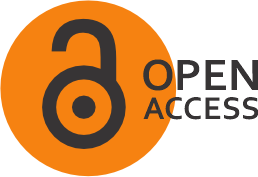Character education during the Glory of Islam in Baghdad

Published online: 27 Dec 2024
Abstract
This study covers religion and morality, which have a close and inseparable relationship, where good morality reflects the quality of a person's religiosity. In Islam, morality is considered not only an important component of religious teachings but also a basis for building a prosperous and civilised society. This study examines the relationship between religion, morality, and the success of Islamic civilisation with a focus on the contribution of the Abbasid Dynasty, especially the city of Baghdad, to the advancement of science, technology, and government administration. In addition, this study also tries to explain the role of Baghdad as a centre of global trade, culture, and education that drives the progress of the Islamic world. Heuristics, criticism, interpretation, and historiography are the four main steps in the historical research method. The purpose of this study is to show that religion and morality play an important role in building successful civilisations. With its headquarters in Baghdad, the Abbasid Dynasty made great advances in administration, science, and technology that still influence the world today. To build individuals and societies with character, good moral education is the main foundation for building an advanced and civilised civilisation. When citizens possess ethical frameworks to guide their actions and decisions, civilisations flourish. By prioritising moral education, societies can foster a sense of responsibility and community, eventually leading to greater social cohesion and progress.
References
Abdurrahman, D. (2003). Sejarah Peradaban Islam: Masa Klasik Hingga Modern. Yogyakarta: Lesfi.
Al-Hasan, A., & Donald, R. (1993). Hill, Teknologi dalam Sejarah Islam, terj. Yuliani Liputo (Bandung: Mizan, 1993).
Al-Qaradawi, Y., & Taufiqurrahman, C. (2005). Meluruskan sejarah umat Islam. PT Raja Grafindo Persada.
Antonio, M. S. I., Mahfudz, S., Muhammad, S., Khairunnas, Fauzi, U., & Mustofa, M. I. (2012). Ensiklopedia peradaban Islam. Tazkia Publishing.
Bobrick, B. (2013). Kejayaan Sang Khalifah Harun ar-Rasyid: Kemajuan Peradaban Dunia pada Zaman Keemasan Islam. Pustaka Alvabet.
Hasjmy, A. (1990). Sejarah Kebudayaan Islam di Indonesia. Jakarta: Bulan Bintang.
Hitti, P. K. (2005). History of the Arabs: Rujukan induk dan paling otoritatif tentang sejarah peradaban Islam. Penerbit Serambi.
Ibrahim, A. (2021). Kota Bagdad sebagai Central Peradaban Islam pada Masa Dinasti Abbasiyah. lentera, 3(1), 43-54. DOI: https://doi.org/10.32505/lentera.v3i1.3083
Laksono, E. (2014). Imperium III: Zaman Kebangkitan Besar. Mizan-Hikmah
Mahasnah, M. H. (2017). Pengantar Studi Sejarah Peradaban Islam. Pustaka Al-Kautsar.
Mahroes, S. (2015). Kebangkitan Pendidikan Bani Abbasiyah Perspektif Sejarah Pendidikan Islam. Tarbiya:Jurnal Ilmu Pendidikan Islam, 1(1), 77–108. http://journal.uinsgd.ac.id/index.php/jurnal-tarbiya/article/view/138/pdf_4
Mahmudunnasir, S. (1994). Islam Konsepsi dan Sejarahnya (A. Affandi (trans.)). Bandung: Remaja Rosdakarya.
Manan, N. A. (2020). Kemajuan dan Kemunduran Peradaban Islam di Eropa (711M-1492M). Jurnal Adabiya, 21(1), 54. https://doi.org/10.22373/adabiya.v21i1.6454 DOI: https://doi.org/10.22373/adabiya.v21i1.6454
M. Noor Matdawam. (1987) Lintasan Sejarah Kebudayaan Islam, (Cet I; Yogjakarta: Cv Bina Usaha).
Nata, H. A. (2014). Sejarah pendidikan islam. Kencana.
Nizar, S. (2007). Sejarah pendidikan Islam: Menelusuri jejak sejarah pendidikan era Rasulullah sampai Indonesia. Bandung: Prenanda Kencana.
Nunzairina, N. (2020). Dinasti Abbasiyah: Kemajuan Peradaban Islam, Pendidikan, dan Kebangkitan Kaum Intelektual. JUSPI (Jurnal Sejarah Peradaban Islam), 3(2), 93-103. DOI: https://doi.org/10.30829/juspi.v3i2.4382
Robbani, S. (2019). Studi Islam dan Masa Depan Islam (Telaah Pemikiran Fazlur Rahman). At-Tuhfah: Jurnal Keislaman, 8(1), 39–56. DOI: https://doi.org/10.36840/jurnalstudikeislaman.v8i1.169
Siswanto, M. P. I. (2013). Dinamika Pendidikan Islam Perspektif Historis.
Sukmana, W. J. (2021). Metode Penelitian Sejarah. Jakarta. Seri Publikasi Pembelajaran, 1(April), 1–4. http://jurnal.uinbanten.ac.id/index.php/tsaqofah/article/view/3512
Sulthon, M. (2004). Sejarah & Peradaban Islam. Malang.
Sunanto, M. (2007). Sejarah Islam Klasik: Perkembangan Ilmu Pengetahuan Islam.
Subhan, A. (2012). Lembaga pendidikan Islam Indonesia: abad ke-20. Kencana.
Yanto. (2015). Sejarah Perpustakaan Bait Al-Hikmah Pada Masa Keemasan Dinasti Abbasiyah. Tamaddun, 15(1), 239–258.
Yatim, B., & Islam, S. P. (2008). Jakarta: PT. Raja Grafindo Persada.
License
Copyright (c) 2024 Muhammad Al Awwal, Ilham Samudra Sanur, M. Rasyid Ridha, Abdul Rahman (Author)

This work is licensed under a Creative Commons Attribution 4.0 International License.
Permission is granted subject to the terms of the License under which the work was published. Permission will be required if your reuse is not covered by the terms of the License.

